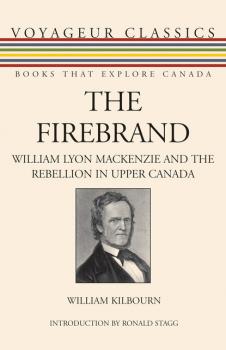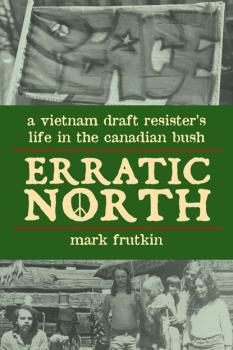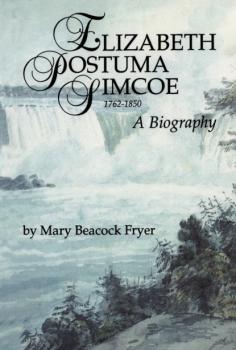ТОП просматриваемых книг сайта:
Биографии и Мемуары
Различные книги в жанре Биографии и Мемуары, доступные для чтения и скачиванияАннотация
Flim Flam explores the world of Canadian white-collar crime, a place inhabited by hustlers, wild gamblers, and crazy dreamers. It takes the reader to the Vancouver Stock Exchange, where dream salesmen have peddled wild stories of easy money, through the «moose pasture» scams of northern Canada, to the con artists who have been drawn to Toronto's financial district. Along the way, you'll meet crooked politicians, a young con man who confessed to a church congregation after he was «born again,» disbarred lawyers, and the creator of a huge paper fortune who was left with nothing but a wolfskin coat when his real estate empire fell apart. Greed is a powerful motivator that has taken some Canadians down strange roads. Some have ended up pocketing millions, but many more of Canada's con artists have self-destructed, taking with them the fortunes of the people they bilked. In the end, they've usually fooled themselves, too. Flim Flam shows that Canadians aren't nearly as dull as we'd like to believe. When it comes to conning each other, we have some of the most colourful and interesting hucksters in the world. This book contains stories from all regions of the country. It will appeal to business and true-crime readers, as well as people who are students of human nature.
Аннотация
In The Firebrand, William Kilbourn brings to life the rebel Canadian hero William Lyon Mackenzie. A skilled historian and an entertaining writer, Kilbourn reveals Mackenzie’s complex character: able political editor, shrewd recorder of his times, efficient first mayor of Toronto, and gadfly of the House of Assembly. Kilbourn vividly recreates the ill-fated Mackenzie-led march on Toronto during the Upper Canada Rebellion of 1837, an uprising of brave but comical farmers unprepared to meet musket and cannon, and deftly portrays the rebellion’s aftermath and Mackenzies subsequent escape and exile. A reprint of William Mackenzie’s own account of the Upper Canada Rebellion is featured. This touching, frequently hilarious book was originally published by Clarke, Irwin in 1956 and remained in print through numerous reprintings and editions for several decades, garnering praise such as «The Firebrand is a major step on the path to nationhood» (Globe and Mail).
Информация о книге
Автор произведения William Kilbourn
Жанр Биографии и Мемуары
Серия Voyageur Classics
Аннотация
From Pioneer Public Health Nurse to Advocate for the Aged: Eunice Henrietta Dyke. A dynamic personality whose determination improved public health care and nurses’ education, and began the recognition of senior citizens’ needs; yet she was fired at the height of her nursing career. A woman described as «ahead of her time.»
Аннотация
In geology an erratic is a «boulder or rock formation transported some distance from its original source, as by a glacier.» In award-winning novelist Mark Frutkin’s case, his movement from his native Cleveland. Ohio, was instigated by his wish to protest and resist the U.S. military draft during the Vietnam War, and his destination was Canada. An estimated 50,000 to 100,000 American Vietnam War draft resisters sought sanctuary in Canada. Many of these men stayed, became Canadian citizens, and have made significant contributions to the country, including writers such as William Gibson, George Fetherling, Keith Maillard, and Jay Scott; musicians Jesse Winchester and Jim Byrnes; children’s performer Eric Nagler; and radio personality Andy Barrie. Although this first nonfiction work by Mark Frutkin looks back at the circumstances and culture of the late 1960s and early 1970s that prompted the author to relocate to Canada, Erratic North is about many other things. It’s also a lyrical meditation about «returning to nature» in the bush country of Quebec and an account of the crucible that forged one writer. Tying everything together, though, is the overarching theme of the book: a contemplation of humanity’s embrace of war and violence and the countervailing impulse to resist that embrace, specifically as seen in the experience of Frutkin himself; his grandfather Simon, who escaped Tsarist Russia and its military in the 1890s; and Louis Drouin, the Quebec farmer Frutkin bought his original farm from and who resisted conscription in World War II.
Аннотация
In this comprehensive biography, Christine Mander depicts the life and times of Emily Murphy with a refreshing candor and vitality. A true Canadian heroine – pioneering feminism, writer (under the alias Janey Canuck), patriot, mother, anti-drug crusader, first woman magistrate of the British Empire and rebel – Emily Murphy defied conventional labels. To Hell with Women Magistrates, fulminated one court official on her appointment. Her greatest triumph came in 1929 when Lord Chancellor Sankey reversed the Canadian Supreme Court decision by ruling that women are persons under the constitution and therefore eligible for any political office. When Emily Murphy died in 1933, after a long battle with diabetes, her friend and fellow activist Nellie McClung remarked, Mrs. Murphy loved a fight and so far as I know, never turned her back on one.
Аннотация
In a career that spanned five decades, Elmer Iseler proved himself pivotal to the development of choral music in Canada. After founding Canada’s first professional choir in 1954, he became artistic director and conductor of the Toronto Mendelssohn Choir. In 1979 he established Canada’s leading chamber choir, the Elmer Iseler Singers. He also enjoyed a long association with the Toronto Symphony Orchestra, conducting more than 150 performances of Handel’s Messiah and premiering complex twentieth-century music. Under his baton, choirs achieved international stature for technical brilliance and artistic versatility. He has, in the estimation of many, created a vibrant, world-class choral infrastructure in Canada. The most decorated musician in Canada, honoured with many awards nationally and internationally, Iseler has made an impact that will continue undiminished through his many recordings, the Elmer Iseler Singers, the Elmer Iseler Chair in Conducting, and the Elmer Iseler National Graduate Fellowships in Choral Conducting at the University of Toronto.
Аннотация
The diaries, letters, and sketches of Elizabeth Simcoe are drawn upon as sources in this portrayal of the energetic and remarkable woman who came to Upper Canada with her husband when he was appointed lieutenant governor.
Аннотация
Who were the beats? Not the sandle-clad «beatniks» of popular lore but dedicated writers, experimenters, skit improvisers, theorizers, hedonists, close friends, bisexual free lovers, shapers of the future. The beats hung out at Columbia university and cheap Times Square cafeterias, devouring ideas. David Creighton shows how the world has taken up their message. In Ecstasy of the Beats he gives a fresh portrait of Carolyn Cassady, «Queen of the Beats,» and of the four major Beat writers. Jack Kerouac's On the Road gave a pattern of adventure to restless youth, Allen Ginsberg donned a prophet's robe by writing Howl , William Burroughs warned against control mechanisms in Naked Lunch , and Neal Cassady's high-energy life made him an icon of freedom. Travelling widely to see where they lived, Creighton enriches the meaning of On the Road and other Beat classics. He invites the reader on the Beats' journey toward ever-deeper levels of understanding and provides interesting insight into Kerouacs French-Canadian roots.
Аннотация
The biggest surprise – and disappointment – that life holds is that it is over so fast. The golden tomorrow, to which most people (usually women) put off their hopes rarely appears. This is the lesson learned by Helen McLean in her memoir. Details from a Larger Canvas is about a woman with the expectations of her time and class heavy upon her shoulders; in short, she is supposed to be much the same woman as her Rosedale matron mother-in-law whose life was bound up in sets of rules and whose life had little expression except in the form of materialistic acquisition and censure. Instead, Helen creates her own life – and, while painting a portrait of Margaret Laurence, finds a woman with whom she has common ground.
Аннотация
Daylight in the Swamp is the bush memoirs of Selwyn Dewdney, a noted Canadian artist and recorder of native rock art. His two great loves, art and the Canadian north, come together in this book. His respect for native culture and art is reflected in his own work, his insight into native rock art, and his passion for canoeing and the northern experience.The third theme of the book is history spanning the period from 1910 through to the 1970s during which the old north largely vanished. Dewdney was there to record the images of forgotten dreams painted on rocks and cliffs throughout the Canadian Shield. Thanks to these memoirs we are all there to witness these things with Dewdney.










